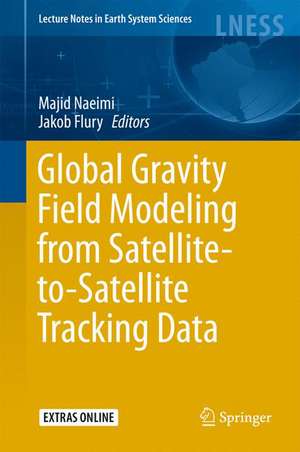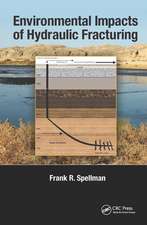Global Gravity Field Modeling from Satellite-to-Satellite Tracking Data: Lecture Notes in Earth System Sciences
Editat de Majid Naeimi, Jakob Fluryen Limba Engleză Hardback – 11 feb 2017
This book provides a sound theoretical basis for the the different gravity field recovery methods and the numerics of satellite-to-satellite tracking data. It represents lectures given at the ‘Wilhelm and Else Heraeus Autumn School’ in Bad Honnef, Germany, October 4-9, 2015. The emphasis of the school was on providing a sound theoretical basis for the different gravity field recovery methods and the numerics of data analysis. The approaches covered here are the variational equations (classical approach), the acceleration approach and the energy balance approach, all of which are used for global gravity field recovery on the basis of satellite observations. The theory of parameter estimation in satellite gravimetry and concepts for orbit determination are also included.
The book guides readers through a broad range of topics in satellite gravimetry, supplemented by the necessary theoretical background and numerical examples. While it provides a comprehensive overview for those readers who are already familiar with satellite gravity data processing, it also offers an essential reference guide for graduate and undergraduate students interested in this field.
| Toate formatele și edițiile | Preț | Express |
|---|---|---|
| Paperback (1) | 691.45 lei 6-8 săpt. | |
| Springer International Publishing – 4 mai 2018 | 691.45 lei 6-8 săpt. | |
| Hardback (1) | 697.65 lei 6-8 săpt. | |
| Springer International Publishing – 11 feb 2017 | 697.65 lei 6-8 săpt. |
Preț: 697.65 lei
Preț vechi: 820.76 lei
-15% Nou
Puncte Express: 1046
Preț estimativ în valută:
133.51€ • 138.87$ • 110.22£
133.51€ • 138.87$ • 110.22£
Carte tipărită la comandă
Livrare economică 12-26 aprilie
Preluare comenzi: 021 569.72.76
Specificații
ISBN-13: 9783319499406
ISBN-10: 3319499408
Pagini: 168
Ilustrații: XV, 168 p. 35 illus., 25 illus. in color.
Dimensiuni: 155 x 235 x 13 mm
Greutate: 0.44 kg
Ediția:1st ed. 2017
Editura: Springer International Publishing
Colecția Springer
Seria Lecture Notes in Earth System Sciences
Locul publicării:Cham, Switzerland
ISBN-10: 3319499408
Pagini: 168
Ilustrații: XV, 168 p. 35 illus., 25 illus. in color.
Dimensiuni: 155 x 235 x 13 mm
Greutate: 0.44 kg
Ediția:1st ed. 2017
Editura: Springer International Publishing
Colecția Springer
Seria Lecture Notes in Earth System Sciences
Locul publicării:Cham, Switzerland
Cuprins
Parameter Estimation for Satellite Gravity Field Modeling.- Precise Orbit Determination.- The Classical Variational Approach.- The Acceleration Approach.- The Energy Balance Approach.
Textul de pe ultima copertă
This book addresses different approaches for recovering the Earth’s gravity field using satellite-to-satellite tracking data. It gathers lectures given at the ‘Wilhelm and Else Heraeus Autumn School’ in Bad Honnef, Germany, October 4-9, 2015. The emphasis of the school was on providing a sound theoretical basis for the different gravity field recovery methods and the numerics of data analysis. The approaches covered here are the variational equations (classical approach), the acceleration approach and the energy balance approach, all of which are used for global gravity field recovery on the basis of satellite observations. The theory of parameter estimation in satellite gravimetry and concepts for orbit determination are also included.
The book guides readers through a broad range of topics in satellite gravimetry, supplemented by the necessary theoretical background and numerical examples. While it provides a comprehensive overview for those readers who arealready familiar with satellite gravity data processing, it also offers an essential reference guide for graduate and undergraduate students interested in this field.
Caracteristici
Assists readers in applying different gravity field recovery approaches using real data Includes several numerical examples that offer readers insights into the numerics of real data analysis Features appendices that provide more detailed information on the data conventions and time/coordinate conversions needed for satellite techniques Includes supplementary material: sn.pub/extras





























